
Sloth
Sloth
Sloth
“Sloths” are given the dishonorable name of “sloth”. But don’t you sometimes envy them and think (I wish I could live like this…)? Sloths are the slowest mammals in the world. Their appearance of hanging leisurely from trees is so adorable that it makes you smile involuntarily. Sloths spend most of their day sleeping, and even when they are awake, they stay still without moving. But that’s not because they are “lazy”. There is a deep reason for that. Well, what is that reason?
Sloth Basic Infomation

Overview of Sloths
Collective term for the suborder Folivora of the order Pilosa within the superorder Xenarthra of mammals.
Comprises two families with six species, the two-toed sloths and the three-toed sloths, along with several extinct families.
Sloths have long limbs (forelimbs and hindlimbs) and are covered in brown to gray-brown fur.
They spend most of their lives in trees, where they eat, sleep, mate, and give birth.

Two-Toed Sloth Family
Two species: the two-toed sloth and Hoffman's two-toed sloth. They appear almost identical.
Body length: about 60-70cm, weight: about 8kg
Two toes on their front feet and three toes on their back feet.
They have either no tail or just a vestigial trace of one.
<Two-Toed Sloth (Choloepus hoffmanni)>
Has seven cervical vertebrae. All those bred in Japan are 'two-toed sloths'.
<Hoffman's Two-Toed Sloth (Choloepus hoffmanni)>
Has one fewer cervical vertebra than the two-toed sloth, with six.
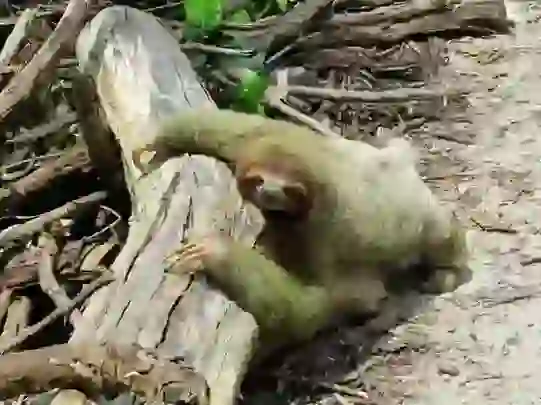
Three-Toed Sloth Family
Four species: the brown-throated three-toed sloth, the pale-throated three-toed sloth, the maned sloth, and the pygmy three-toed sloth.
Body length: about 50cm-60cm, weight: about 4kg-5kg
Tail length 3-7cm
<Brown-Throated Three-Toed Sloth (Bradypus variegatus)>
The throat color is brown.
The eye mask marking is slightly longer than that of the pale-throated sloth.
<Pale-Throated Three-Toed Sloth (Bradypus tridactylus)>
The throat color is white.
<Maned Sloth (torquatus)>
Smaller than the other three-toed sloths.
Body length: about 40-50cm, weight: about 4kg
The fur on the neck and shoulders is long and forms a black mane.
<Pygmy Three-Toed Sloth (Bradypus pygmaeus)>
Cannot live outside of mangrove forests.
Its population has decreased to an estimated 200 individuals due to hunting and mangrove deforestation.
Sloth Q&A

Where do sloths live?
Sloths live in the forests of Central and South America, in trees about 10 to 30 meters high.
【Two-Toed Sloth Family】
The two-toed sloth inhabits the dense forests of northern Colombia and Venezuela, Suriname, northern Brazil, and northern Peru.
Hoffman's two-toed sloth is found in the forests of Central America from Honduras to Brazil.
【Three-Toed Sloth Family】
The pale-throated three-toed sloth resides in Brazil.
The brown-throated three-toed sloth is found in Brazil, Argentina, and Bolivia.
The maned sloth lives in southern Brazil.
The pygmy three-toed sloth inhabits an island off Central and South America.

What is the origin of the name 'sloth'?
The name 'sloth' comes from their appearance of hanging motionless from trees. The scientific name 'Folivora' means 'leaf eater', and the English name 'sloth' also means 'laziness'.

Why are sloths' limbs and claws so long?
Sloths have long limbs, with the forelimbs being even longer than the hindlimbs, making them well-suited for their arboreal lifestyle. Sloths also have hook-like claws, which they use to hang from branches.

Does hanging upside down from trees not tire sloths?
Yes. Sloths' organs such as their liver, stomach, and kidneys are anchored to their ribs, which prevents them from pressing against the diaphragm when hanging upside down. This allows them to hang for extended periods without issue. Even in death, sloths can remain hanging from tree branches.
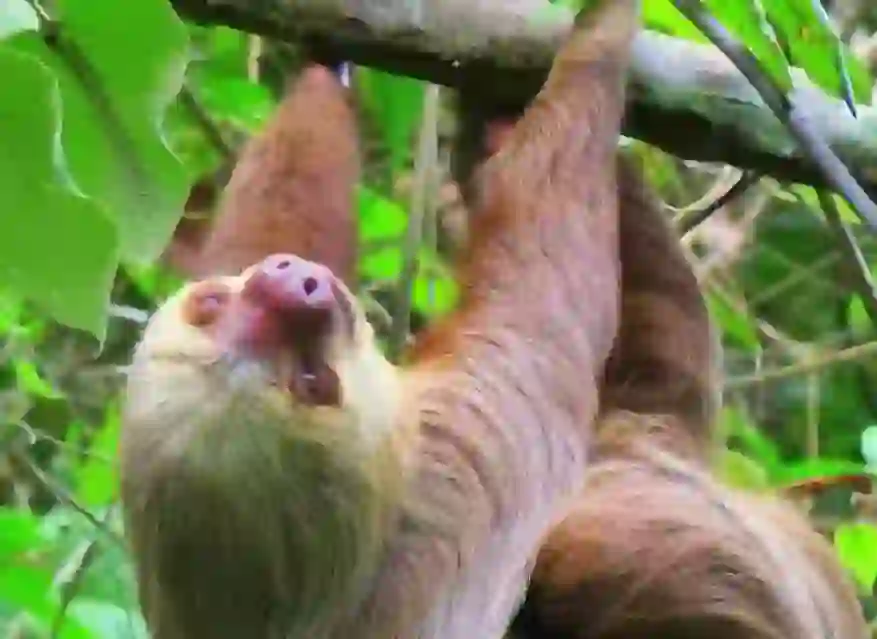
Why are sloths always so still?
Sloths sleep for about 15-20 hours a day. When awake, they rarely move and simply eat leaves nearby. They remain so still that algae can grow on their long fur.

What do sloths eat?
Sloths feed on tree leaves and algae that grow on their own bodies. While two-toed sloths eat various leaves, buds, and fruits, three-toed sloths eat leaves from Cecropia trees. However, tree leaves are low in calories and nutrients, which would not be sufficient to sustain life if they ate like other animals.
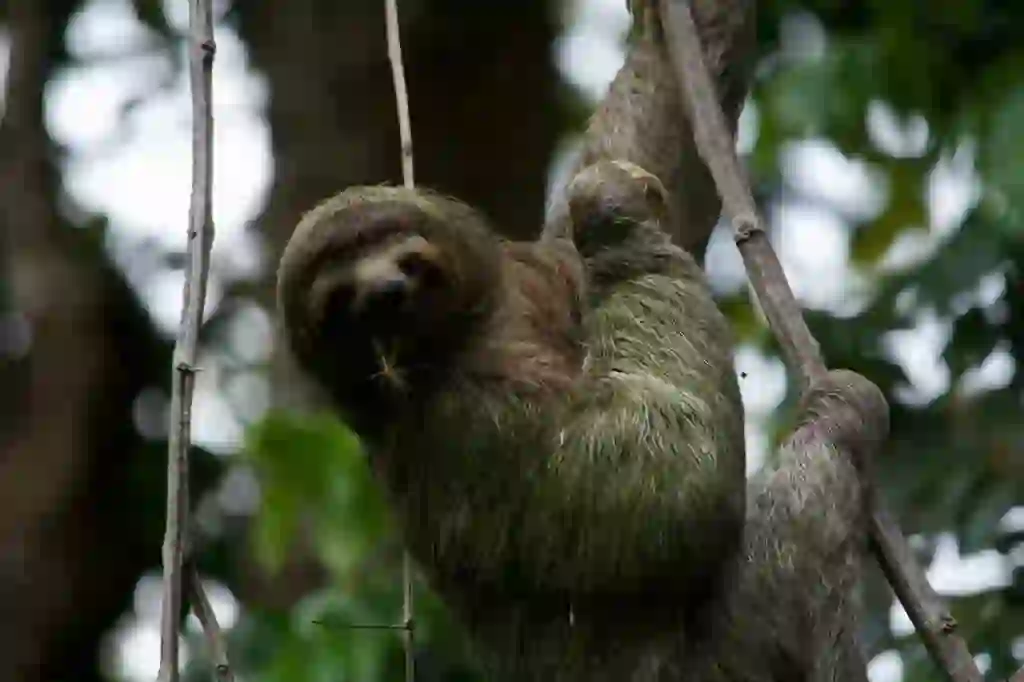
Do sloths ever come down from the trees?
Sloths spend their lives in trees, where they sleep, eat, give birth, and remain largely motionless to blend in with the surrounding foliage and avoid predators. However, they descend from the trees only to defecate, which occurs about once every week to ten days.
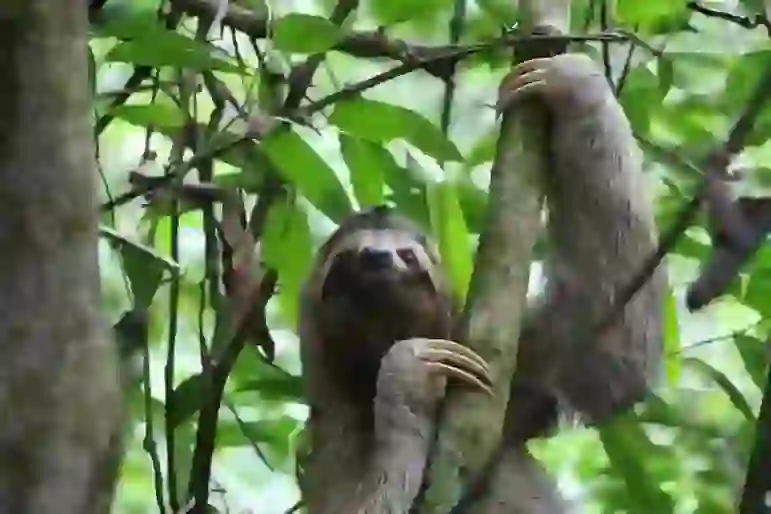
How can sloths survive on such a nutrient-poor diet?
Sloths are able to survive on a nutrient-poor diet by conserving energy. They spend most of their day sleeping and only occasionally eat leaves or defecate, which means they require minimal muscle mass and nutrients.

Is it true that sloths can starve with a full stomach?
Yes, it's true. Sloths can starve even though their stomachs are full! This is because the digestion of leaves by intestinal bacteria in their stomachs is incredibly slow, taking up to 30 days to digest a single leaf.
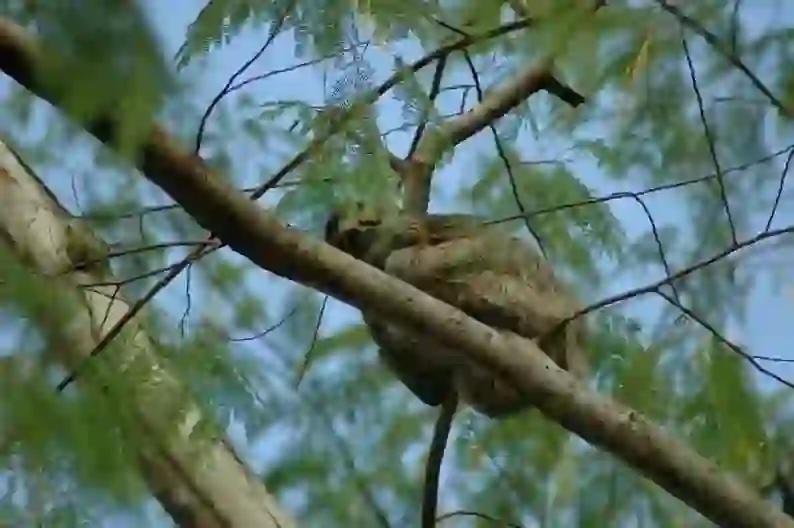
How fast can sloths run?
Sloths move very slowly, managing only about 2-5 meters per minute. Two-toed sloths are slightly faster than three-toed sloths.
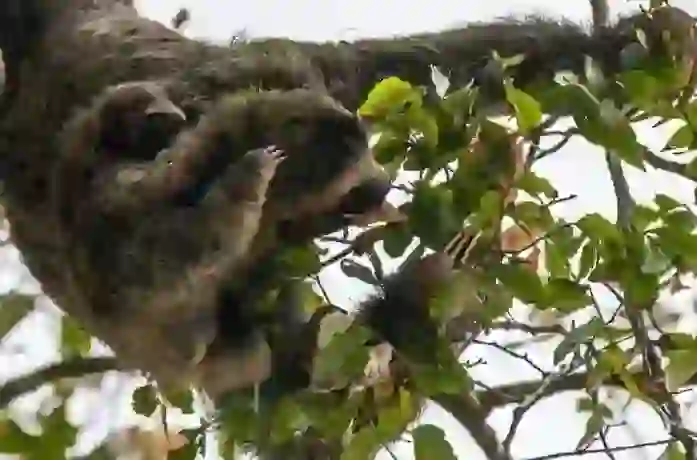
Can sloths swim?
Two-toed sloths cannot swim as their face does not remain above water. However, three-toed sloths are good swimmers and can move faster in water than on land, an adaptation to the periodically flooded environments of the Amazon.
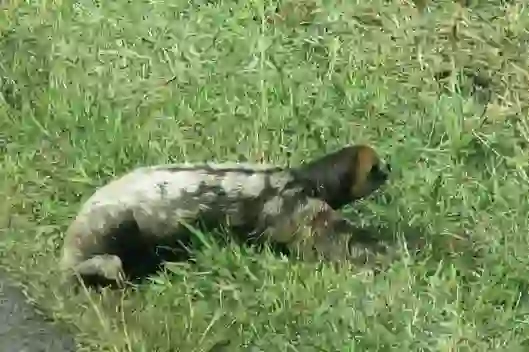
How do baby sloths grow?
Sloths have a gestation period of 6 to 12 months, after which they give birth to a single baby. Baby sloths cling to their mothers for several months, being fed and protected until they are ready to live independently.
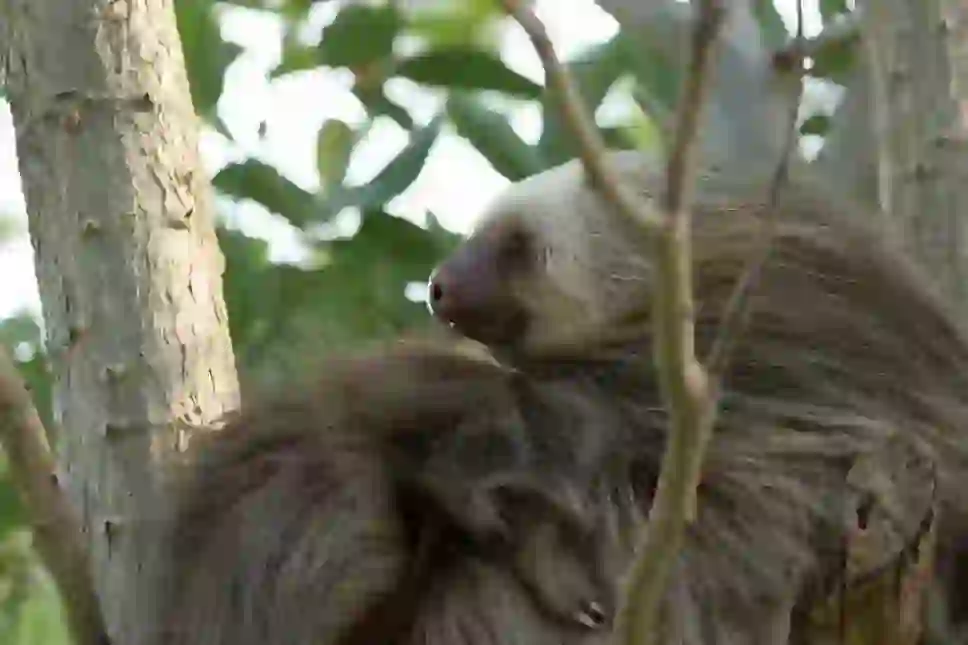
What are the natural predators of sloths?
Sloths' natural predators include ground predators like pumas and jaguars, and aerial predators such as harpy eagles. When sloths detect these predators, they can only stop moving and try to blend into the trees.

What were the extinct sloths like?
Extinct sloths lived in South America from about 2 million to 10,000 years ago, including species like Megatherium, which was one of the largest terrestrial sloths, reaching lengths of 6-8 meters and weights of up to 3 tons.

Can sloths be kept as pets?
While sloths can be purchased at specialty exotic pet stores, they are expensive and difficult to care for in a typical home. Additionally, sloths are very delicate and can suffer significant stress and damage from routine handling.
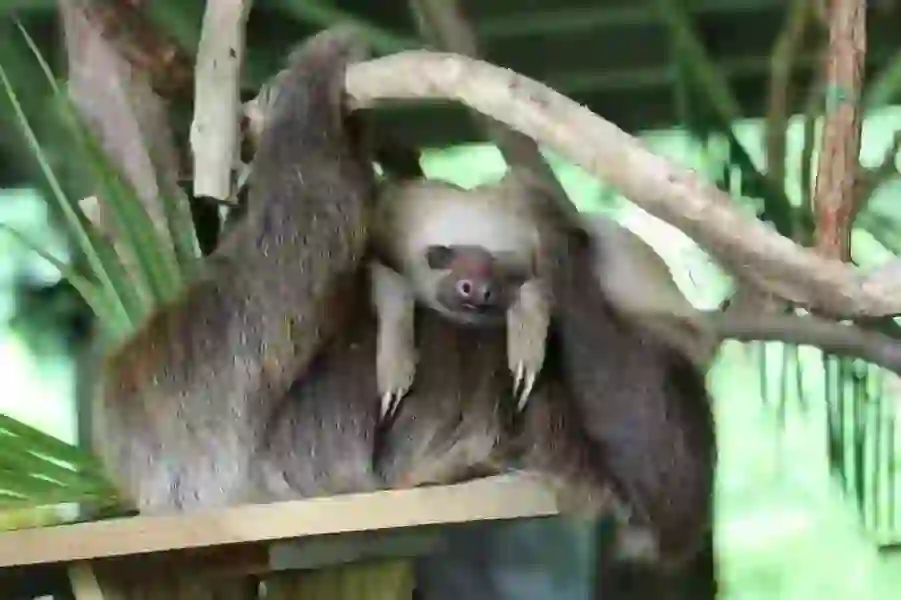
Where can you meet a sloth?
Sloths can be seen at zoos and safari parks. As of February 2021, zoos where you can meet two-toed sloths include North Safari Sapporo and Nasu Animal Kingdom in Japan.

Would you like to become a part of the 'Animalbook.jp'?
Turn your knowledge into Q&A and share it with the world. ※Publication will be activated after purchase. Let's share information together!
Sloth Type of List
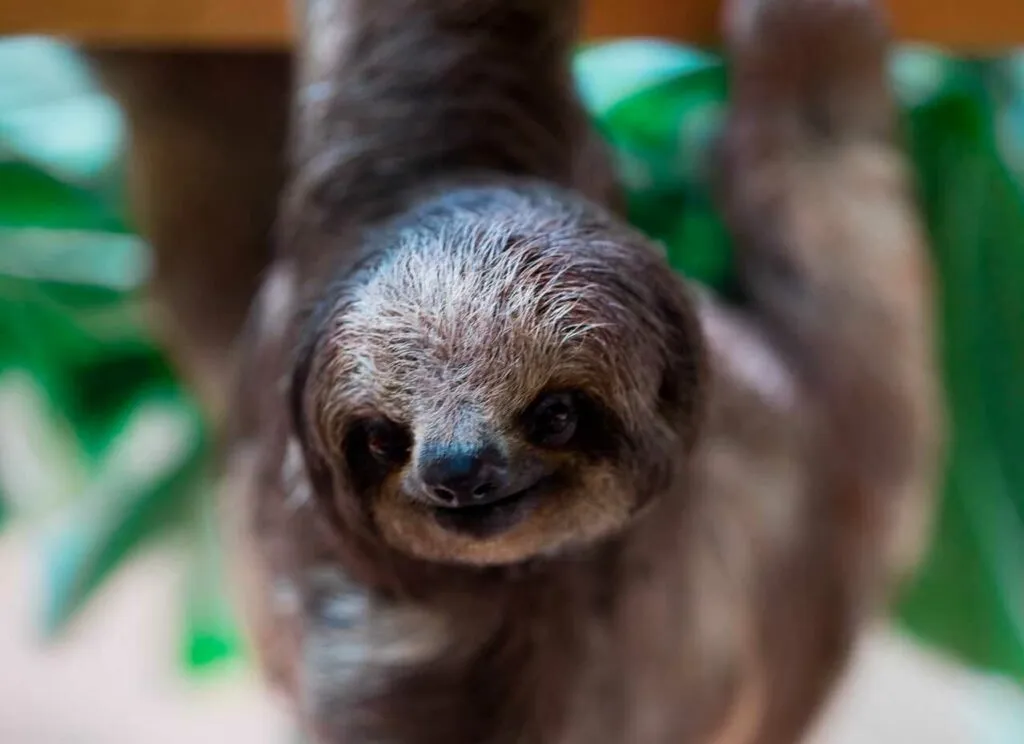
【Two-Toed Sloth Family】
Two species: the two-toed sloth and Hoffman's two-toed sloth. They appear almost identical.
Body length: about 60-70cm, weight: about 8kg
Two toes on their front feet and three toes on their back feet.
They have either no tail or just a vestigial trace of one.
<Two-Toed Sloth (Choloepus hoffmanni)>
Has seven cervical vertebrae. All those bred in Japan are 'two-toed sloths'.
<Hoffman's Two-Toed Sloth (Choloepus hoffmanni)>
Has one fewer cervical vertebra than the two-toed sloth, with six.
【Three-Toed Sloth Family】
Four species: the brown-throated three-toed sloth, the pale-throated three-toed sloth, the maned sloth, and the pygmy three-toed sloth.
Body length: about 50cm-60cm, weight: about 4kg-5kg
Tail length 3-7cm
<Brown-Throated Three-Toed Sloth (Bradypus variegatus)>
The throat color is brown.
The eye mask marking is slightly longer than that of the pale-throated sloth.
<Pale-Throated Three-Toed Sloth (Bradypus tridactylus)>
The throat color is white.
<Maned Sloth (torquatus)>
Smaller than the other three-toed sloths.
Body length: about 40-50cm, weight: about 4kg
The fur on the neck and shoulders is long and forms a black mane.
<Pygmy Three-Toed Sloth (Bradypus pygmaeus)>
Cannot live outside of mangrove forests.
Its population has decreased to an estimated 200 individuals due to hunting and mangrove deforestation.
Information
Congratulations! You are the first commenter!

Create Your Favorite List!
Sloth
Save the animals you love! Build your own list to quickly revisit your favorites later.

Would you like to leave a comment?
※Please note: This is for the purchase of rights to post comments within the article.
Find Your Favorites!
Our shop offers a unique and attractive selection of goods themed around various animals.
Sloth References

- wikipedia ナマケモノ https://ja.wikipedia.org/wiki/ナマケモノ
- wikipedia メガテリウム https://ja.wikipedia.org/wiki/メガテリウム
- Zoocan いきもの図鑑 http://www.zoocan.jp/zukan/index.cgi?288
- GIZMOOD https://www.gizmodo.jp/2016/08/there-is-a-reasonable-explanation-for-why-this-sloth-won-t-move.html
- 動物完全大百科・キリン https://animalbook.jp/animalia/giraffe/
- ナショナルジオグラフィックNews https://natgeo.nikkeibp.co.jp/atcl/news/18/030200096/?P=1
- 川口先生のペットコラム https://www.asahi-kasei.co.jp/hebel/pet/kenkyu/blog/2009.01-06.shtml/
- AFP BBニュース「ナマケモノの内臓、逆さにぶら下がるための構造持つ 研究」 https://www.afpbb.com/articles/-/3013373
Sloth Introduction of media used

出典:https://unsplash.com/photos/5t9T6hQ2Cn0

出典:https://unsplash.com/photos/l4QSO66AwmE

出典:https://commons.wikimedia.org/wiki/File:Sloth-Costa_rica.jpg

出典:https://pixabay.com/images/id-62869/

出典:https://unsplash.com/photos/E1UfNaIQMSY

出典:https://unsplash.com/photos/VcRbMldAFU8

出典:https://unsplash.com/photos/qmYTIcJ82qk

出典:https://pixabay.com/images/id-2759724/

出典:https://pixabay.com/images/id-407088/

出典:https://pixabay.com/images/id-960160/

food
出典:https://pixabay.com/images/id-16998/

出典:https://pixabay.com/images/id-2124876/

出典:https://pixabay.com/images/id-1155844/

出典:https://pixabay.com/images/id-2124876/

出典:https://pixabay.com/images/id-2124876/

出典:https://pixabay.com/images/id-318882/

出典:https://pixabay.com/images/id-3638527/

enemy
出典:https://pixabay.com/images/id-4844660/
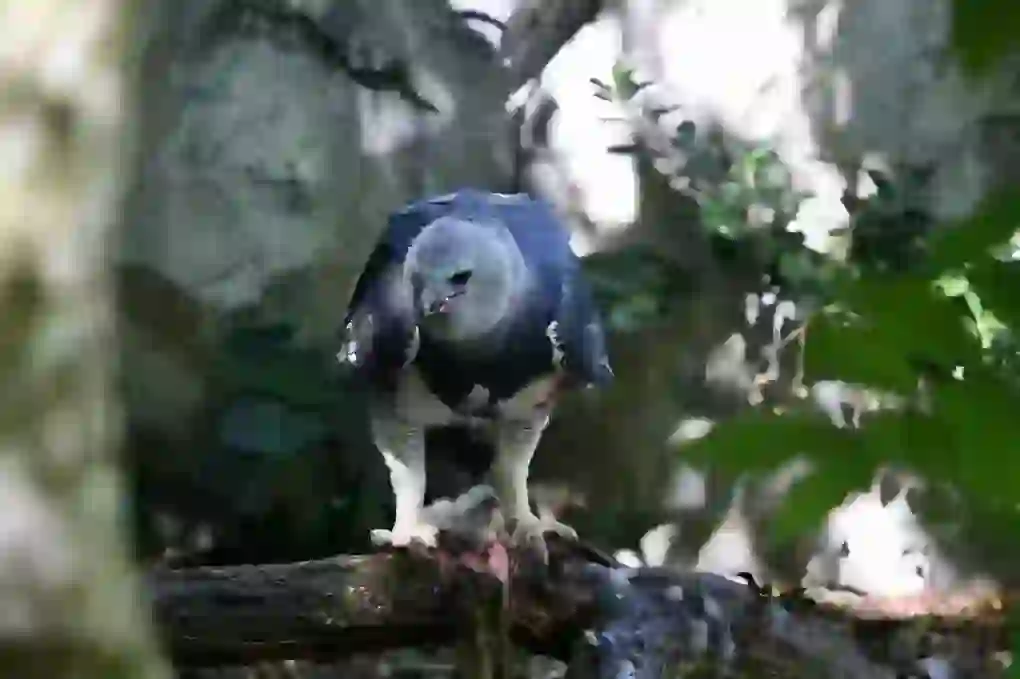
enemy
出典:https://commons.wikimedia.org/wiki/File:Harpy_Eagle,_South_America.jpeg
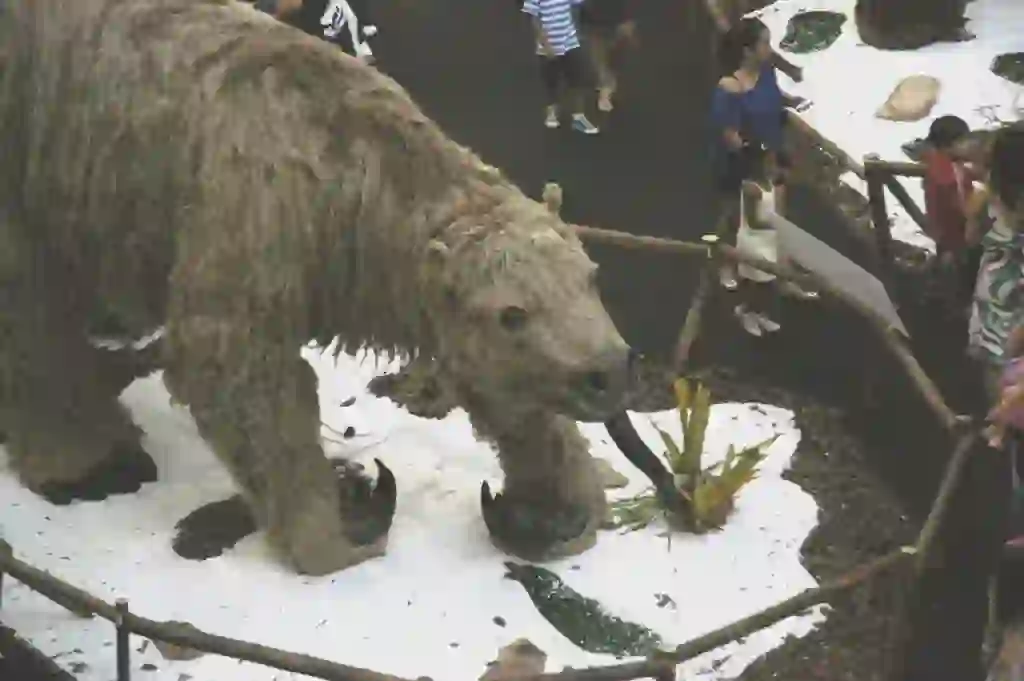
similar
出典:https://commons.wikimedia.org/wiki/File:MegateriumDSC_4934.jpg
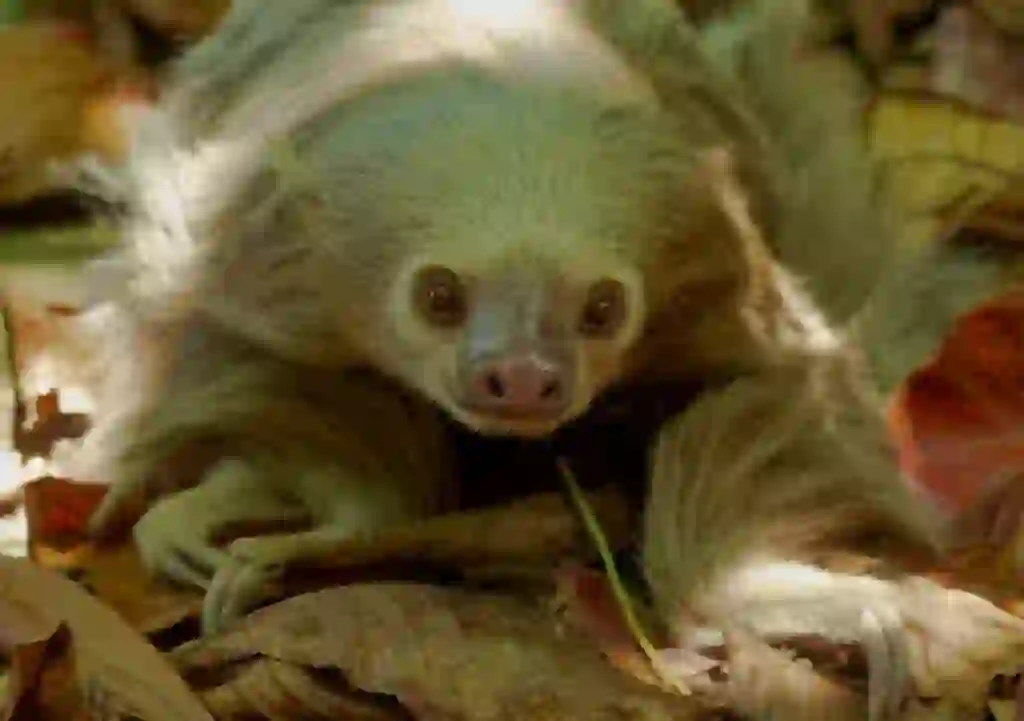
出典:https://unsplash.com/photos/iAYwFFMysVY
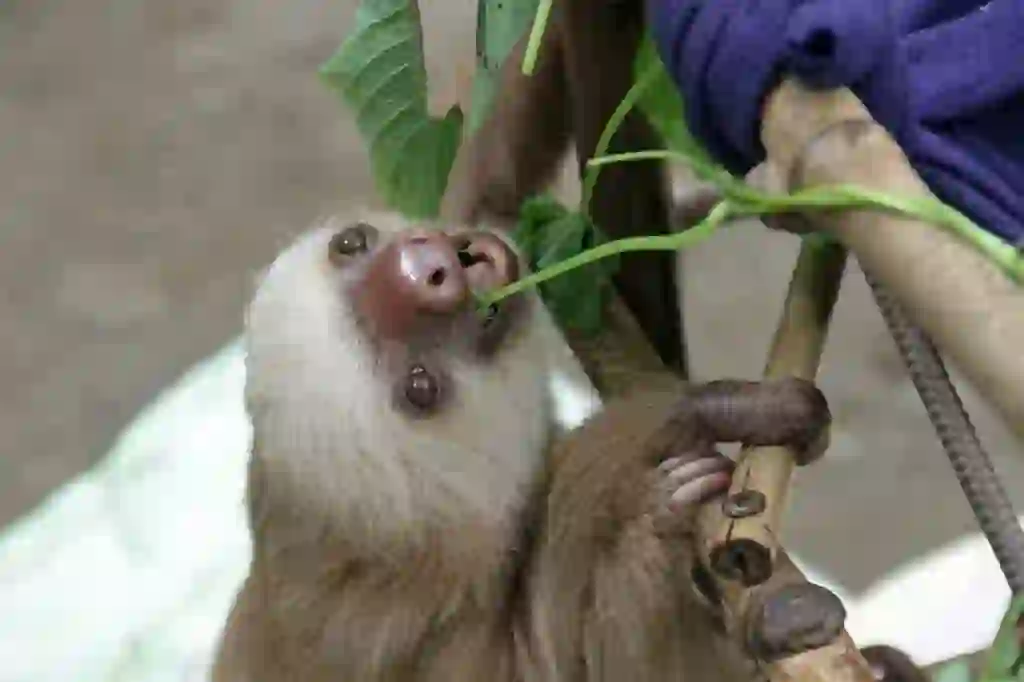
出典:https://pixabay.com/images/id-4063753/

Help Enrich Our Animalbook.jp with Your Media!
We are constantly looking to expand and enrich our Animalbook.jp with amazing photos and videos of animals. If you have any media that you'd like to share, please contribute and help us showcase the beauty and diversity of the animal kingdom. Your submissions will be credited and featured in our encyclopedia, reaching a wide audience of animal lovers.


















